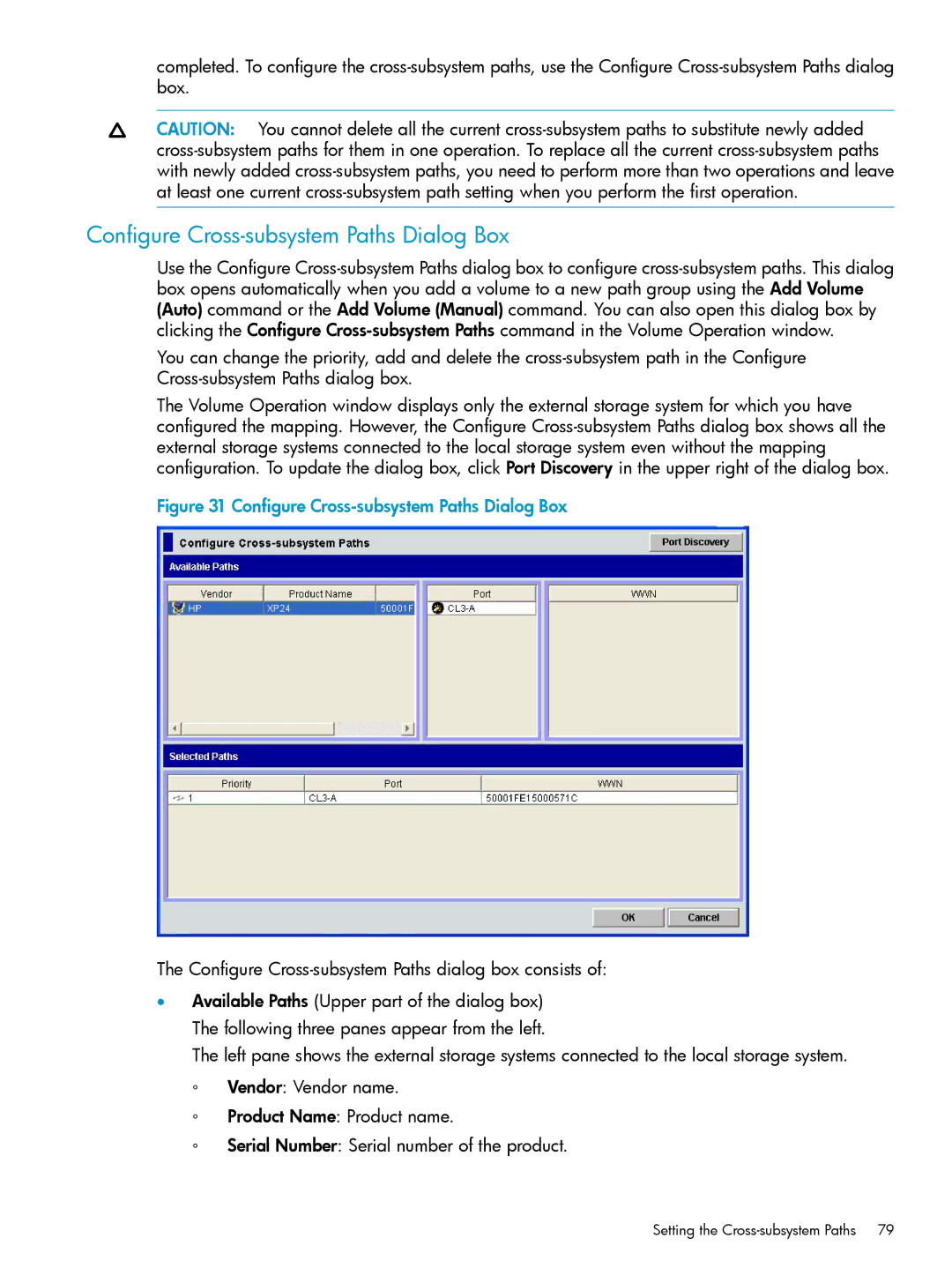
completed. To configure the
CAUTION: You cannot delete all the current
Configure Cross-subsystem Paths Dialog Box
Use the Configure
You can change the priority, add and delete the
The Volume Operation window displays only the external storage system for which you have configured the mapping. However, the Configure
Figure 31 Configure Cross-subsystem Paths Dialog Box
The Configure
•Available Paths (Upper part of the dialog box) The following three panes appear from the left.
The left pane shows the external storage systems connected to the local storage system.
◦Vendor: Vendor name.
◦Product Name: Product name.
◦Serial Number: Serial number of the product.
Setting the | 79 |
